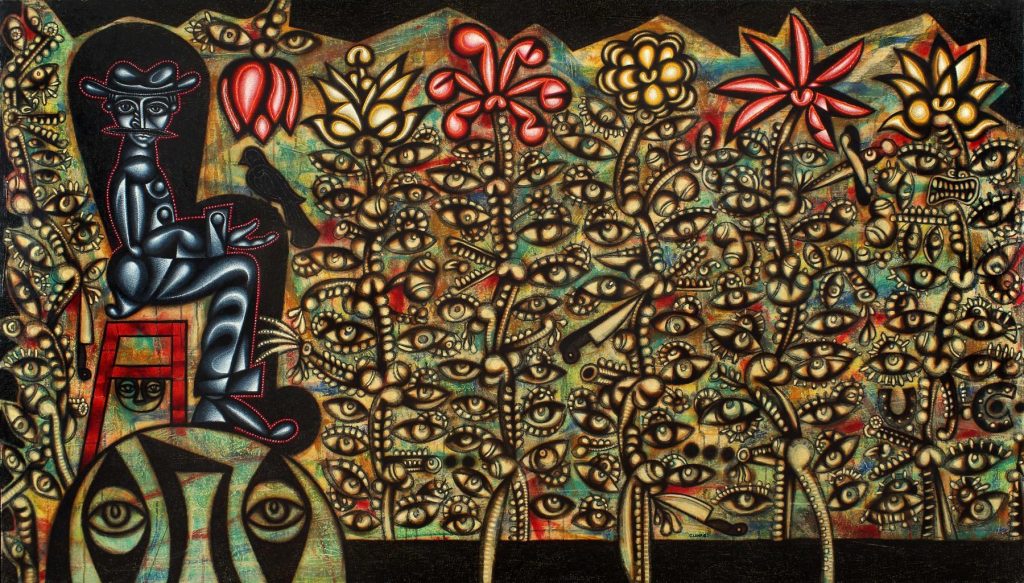Bruca Manigua
by Carlos Luna

Oil on Canvas
48 x 84.5 in
(122 x 214.5 cm)
2004
Provenance
Robert and Daisy Blanchard Cisneros Art Collection, Miami, Florida, USA.
Exhibited
Complejo Cultural Universitario, Puebla, Mexico, August 18, 2009 –
Museum of Art Fort Lauderdale, Nova Southeastern University, Fort Lauderdale, Florida, USA, October 2, 2008 –
Museum of Latin American Art (MOLAA), Long Beach, California, USA. June 12 –
The Katzen, American University Museum, College of Arts and Sciences, Washington, D.C., USA, January 29 –
Polk Museum of Art, Lakeland, Florida, USA, August 24 –
Literature
Carlos Luna, Personal Histories, Susquehanna Art Museum, Polk Museum of Art & The Suzanne H. Arnold Gallery, Lebanon Valley College, p. 112 –
Carlos Luna, El Gran Mambo, American University Museum, Museum of Latin American Art (MOLAA), p. 31, Published 2008, Illustrated in color.
Pablo Picasso Ceramics, Carlos Luna Paintings, p. 88 –
Museum Descriptions
Bruca manigua
In Luna’s Bruca manigua or Wild Jungle from 2004, the guarjiro sits sideways near the left side of the painting on a little red stool that in turn sits atop a large Elegguá (a small Elegguá is attached to the bottom of the chair). His body is set against a dark shadow, on which, at knee height, sits the shadow of a black bird. Although there is a field of undulating plants in front of him, the guarjiro’s head is turned to the viewer, bearing a somewhat ambiguous mien. The vegetation is alive with all manner of objects that seem to morph into one another: gourds, eyes, mouths, horseshoes, knives, and, at the top, as if to hide what is below, fleshy-
–
“Bruca Maniguá” is the title of a very popular song written by black Cuban composer-
–

